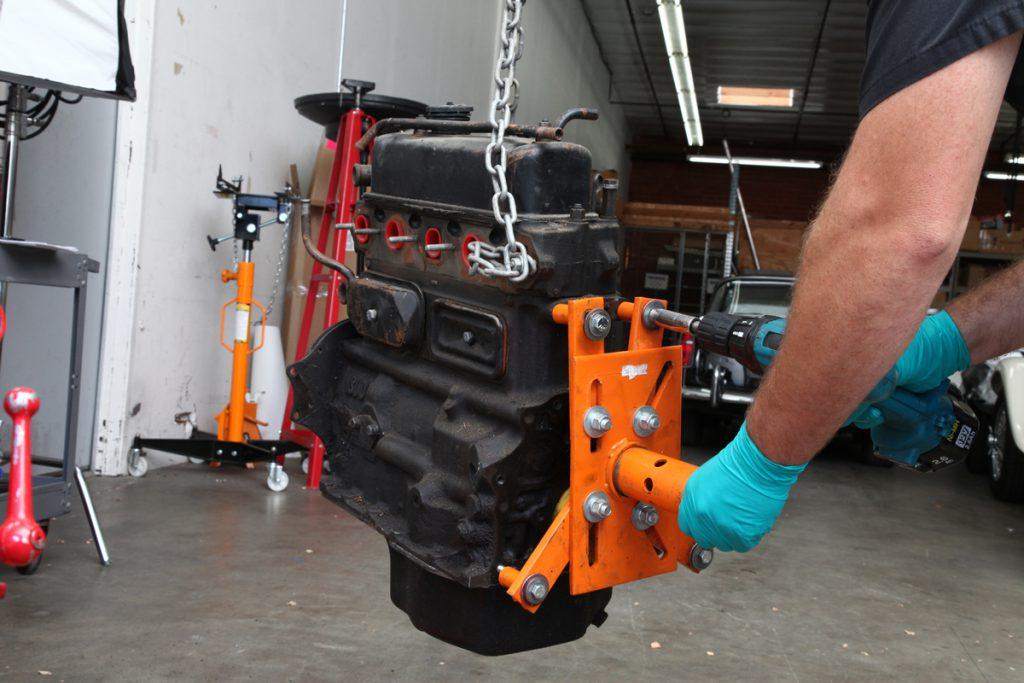Engine and transmission stands are heavy-duty tools used to hold and position engine blocks during repairs, maintenance, and assembly. The engine stand features metal frames and brackets that can hold blocks of various sizes. An engine can be left on a stand for as long as needed, but necessary precautions must be taken to protect it from the elements, potential rusting, and flat spots.
Is It Safe to Leave an Engine on a Stand?
Leaving an engine on a stand is safe and recommended when working on your engine block or transmission. An engine stand is designed to hold the weight of the block and facilitate easy rotation. Some projects take months or years, resulting in your engine sitting on a stand for long periods of time.
The amount of time an engine can remain on the stand will be affected by the type of engine and the stand. Older stands might not be suitable for holding heavy weight, and some engine models require a stand with a flat base instead of suspension. Check the load capacity to avoid overloading the stand.
How Do You Protect an Engine on a Stand?
Cover the engine if it will remain on a stand for a long time to protect it from dust, debris, rain, and other elements. Exposure to environmental elements may lead to rust and other unwanted reactions. The weight of an engine on a stand for weeks at a time increases the likelihood of damaging the stand’s casters. Safeguards, such as moving the engine around and switching gear positions, distribute the weight of the engine across different parts, allowing your stand to wear evenly. Here are some additional tips to protect your engine while it remains on a stand:
Assemble the Engine Stand
Inspect your transmission stand to make sure all components are in good working condition.
Place the stand on a level surface and fasten the wheel casters into the base using nuts.
Fasten the support posts to the mounting plate with bolts.
Secure the engine to the stand using bolts and adjust the position if needed.
Clean the Engine
Before placing the engine onto the stand, clean it thoroughly to remove all dirt, dust, grease, and contaminants. Any contaminants transferred from the engine could cause unnecessary wear on the stand. Use a wire brush and degreaser to remove the buildup and a pressure washer to spray it clean. Let the engine dry and wipe off any excess water and dust that has settled on the block.
Apply Anti-Rust Protection
Engine blocks are made of metal components and are prone to corrosion. To prevent rust from damaging your engine, apply a rust inhibitor or any protective coating recommended by the manufacturer. To enhance the protective barrier against moisture and rust, apply a coat of storage oil.
Cover the Engine
Protect your engine from dust and moisture by covering it with a tarp or breathable cover that allows air circulation. A breathable covering prevents condensation and discourages rusting. Keep the garage or storage area dry and control humidity using silica gel packets or a dehumidifier.
Monitor Your Engine
Well-made stands are capable of holding your engine for years with regular inspection and maintenance. If you notice condensation or signs of rust, uncover and clean the engine before reapplying the anti-rust coating. Regular inspection allows you to prevent potential issues from getting worse over time.
Purchase a Heavy-Duty Engine Stand Today
Transmission stands are ideal for holding your engine block during routine repairs and maintenance. They provide a safe and stable workspace to allow mechanics to access all parts of the engine. When properly maintained, these stands can safely hold and store engine blocks for weeks or even months. Contact a heavy-duty tool supplier today to find the right engine stand for your needs.








